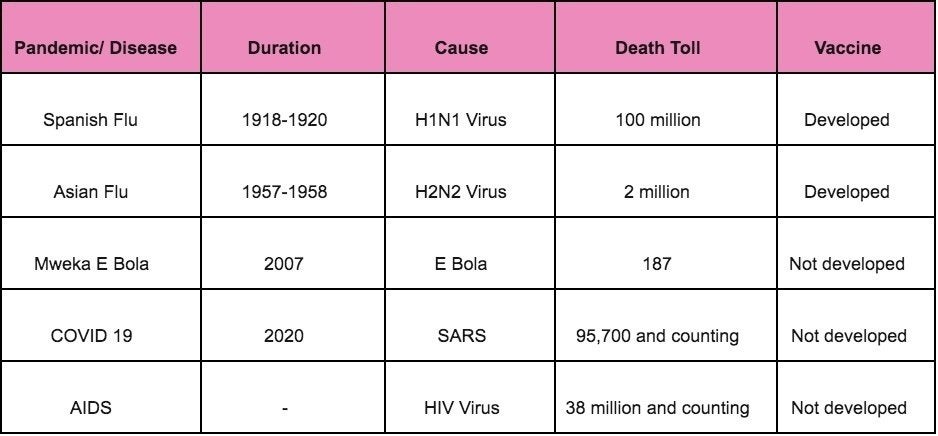In the 16th century, a European disease ravaged America, Asia, and Arabia, leaving a staggering death toll of almost 500 million. Victims developed symptoms namely high fever, muscle pain, and fatigue followed by small blisters and fatal skin rashes that spread throughout the body, in less than 24 hours. 3 out of ten people who contracted the disease, died leaving others with extensive scarring that would not heal. Sadly, there was no cure nor any treatment protocol. The disease which was later named smallpox, which crudely meant small pimples or rash, wiped out about 90-95% of the indigenous population in America in this period. This made it, by far, one of the deadliest epidemics ever recorded in human history.
When the disease struck Boston with vengeance in 1721, doctors and scientists were left aghast and clueless, as the disease killed its victims one after another. Fortunately yet ironically, the solution came from an uneducated African slave named Onesimus. This remarkable idea not only saved a remarkable number of lives but also ignited a huge revolution in medical science. He confessed that he was immune to smallpox to his master. He said that he was variolated back in Africa by rubbing the pus from an infected person into his wound and this process made him “Smallpox repellent”. Cotton Mather, stunned by this idea, did some digging and found that similar practices were also performed in countries like Turkey and China to provoke the immune system. However, his implementation plans were faced with a very hostile crowd who were unable to accept that the idea had come from a black person. Nevertheless, Cotton Mather carried out the inoculation in Boston with a few of his supporters. Out of the lot, only six died and the remaining showed no symptoms of smallpox.
After the epidemic, it was observed that only 14% of the population had succumbed to the disease. This was far less compared to the previous smallpox epidemics. Finally, there was hope. Inspired by this, Edward Jenner, a doctor in the UK, took the pus from the hand of a milkmaid who had contracted smallpox and scratched it into the hand of an 8-year-old boy and later variolated him with smallpox. Well, just like Jenner predicted, the boy did not catch smallpox. Hence he declared that inoculation of cowpox was the best way to provoke our immunity against smallpox and coined the term vaccination for the process and hence the first vaccine was invented. Fortunately, considering the outcomes, his invention showed widespread acceptance across the world, and by 1980 smallpox was completely eradicated.
Today the human race is at constant war with something far more dangerous than guns and explosives. It’s with organisms that are barely visible to the naked eye called pathogens. This has been occurring from times immemorial in the past, we have often succumbed to failure. However, it was Jenner’s brainchild that turned things around. This breakthrough not only helped eradicate a highly progressive disease but also became the golden goose that laid the foundation for new subfields like immunology, epidemiology, and pathology within medical science.
Ever since then, vaccines had begun evolving taking new names and definitions depending upon the base material.
By 1885, Louis Pasteur, a French chemist, developed vaccines for chicken cholera and anthrax using an attenuated form of the virus. This was classified as the first generation of vaccines which were also called whole organism vaccines as the disease-causing agent itself was administered into the body of the individual to provoke the immune system. However, despite its undeniable success, the methodology began raising many safety concerns down the road. It was later observed that the method could not be applied for all diseases, as there is a possibility that an individual’s immune system could be compromised. For example, you can’t just give an attenuated form of the AIDS virus to an individual in the name of vaccination unless of course, you want to kill him or wipe out half of humanity for good. The AIDS virus is like a bunch of Adolf Hitlers combined. Their dire desire is to take out the resistance and infest the body. Hence there is no question of immunization with something that kills the immune system itself.
Subunit vaccines and toxoid vaccines were introduced which accounted for these safety concerns. The subunit vaccines involved an attenuated part of the pathogen. For example, the subunit vaccine against Hepatitis B is composed of only the surface proteins and not the entire virus itself. In the due course of time, vaccines were developed for Influenza and Pneumonia. Toxoid vaccines, on the other hand, were made up of toxins or poisonous substances only less poisonous. These vaccines helped us prevent Tetanus, Diphtheria, whooping cough, and many more.
However, science did not stop there.
DNA vaccines were invented in 1983. They contain DNA that is similar to specific proteins from a pathogen. The DNA is administered into the body and taken up by cells, whose normal metabolic processes prepare proteins based on the genetic code that they carry. As these proteins contain certain amino acid sequences similar to that of a bacteria or virus, they are recognized as foreign and when they are processed by the infected cells and displayed on their surface, the immune system is triggered and does the needful. Though highly innovative, yet has high adverse effects, it is still under testing, and scientists believe that this method might just help us in eliminating Zika, HIV, and the E Bola virus.
All this sounds just great!
But for a moment take a close look at this table.

Despite the exponential growth of medical science ever since the invention of the first vaccine, it is evident that it still has a long way to go. The number of diseases that we have to cope with these days, are increasing and their causes are becoming more difficult to eliminate. The current situation fighting with current “elite” viruses such as AIDS and E Bola is like ransomware. You either pay a heavy price like an arm or a leg or the virus infests on you entirely, till you die.
Today, vaccine development is constantly hindered by costs, affordability, and inadequate preclinical data. To add insult to the injury, vaccines are facing a lot of opposition thanks to the crazy myths that are being spread, such as “vaccine causes autism.”
Nevertheless, it is probable that effective vaccines will be developed against the major infections although it is difficult to predict how long this will take, and that eventually, these infections will cease to be a major public health priority even if they cannot be eradicated completely. Considering the maximum benefit that vaccination can provide against infectious diseases, it is imperative that we develop a global, high-level surveillance system to detect the emergence of new potentially dangerous infections and also to detect the emergence or signs of “vaccine resistance” as quickly as possible so that countermeasures can be implemented. For the time being, patience, optimism, and research is the key.



